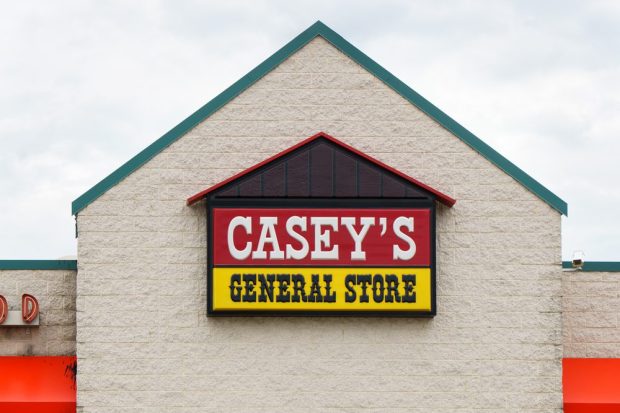C-Stores Boost Pickup Food Orders Amid Rise in Low-Income Demand

Low-income consumers are turning to convenience stores for cheap and easy meals.
This, as Casey’s General Stores, the nation’s third-largest convenience retailer and fifth-largest pizza chain, said the behavioral shifts of its lower-income customers is driving growth.
“[One] thing we’re seeing with lower income consumers is this, which actually works out as a benefit to us: they are ordering less deliveries for pizza [and] they’re just simply picking it up at the store, because it’s cheaper than having it delivered,” CEO Darren Rebelez said on a call with analysts Wednesday (Dec. 7) discussing the brand’s most recent earnings report.
Indeed, research from PYMNTS’ September study “New Reality Check: The Paycheck-To-Paycheck Report,” created in collaboration with LendingClub, which drew from a survey of nearly 3,500 U.S. consumers, finds that two-thirds of low-income consumers have made significant changes to how they manage and spend money in response to inflation.
Get the study: New Reality Check: The Paycheck-To-Paycheck Report
This shift to pickup certainly benefits the retailer, with pickup sales yielding higher margins than delivery, especially given Casey’s reliance on third-party aggregators DoorDash and Uber Eats to fulfill delivery orders. In fact, the retailer’s margins for prepared food and dispensed beverage sales increased six percentage points relative to a year ago.
Overall, the retailer’s same-store prepared food and dispensed beverage sales increased 11% year over year. Rebelez noted that customers see the c-store chain’s food offerings as a “good value.”
Additionally, some of these lower-income consumers, who make up 28% of the retailer’s customers, have not only been shifting how they order but also finding ways to get their food needs met quickly and inexpensively outside of typical prepared meal offerings.
“We’re [starting] to see [them] taking different products and using those as meal replacements,” he said. “So, think of a protein shake or enhanced juices as an alternative to a meal.”
These remarks echo the observations of food giant Campbell Soup Company, which shared Wednesday in a presentation accompanying its latest earnings report that consumption of its ready-to-serve soups is up 9% year over year and 18% relative to 2019 as consumers seek more affordable alternatives to restaurant meals.
“Our consumer insights show that consumers continue to cut back on out-of-home eating and are migrating for more expensive grocery categories as they seek ways to ease the impact of inflation,” Mark Clouse, the company’s CEO, told analysts on a call.
Indeed, many diners have been looking to cut back on their restaurant spending, but consumers across income brackets continue to need convenient options for when they do not have time to cook from scratch. In fact, research from the August edition of PYMNTS’ Consumer Inflation Sentiment study, “Consumer Inflation Sentiment: Inflation Slowly Ebbs, but Consumer Outlook Remains Gloomy,” revealed that, in response to inflation, 78% of restaurant customers are eating at home more.
Read the report: Consumer Inflation Sentiment: Inflation Slowly Ebbs, but Consumer Outlook Remains Gloomy
